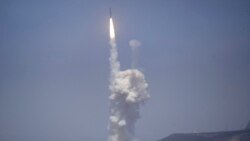The United States and NATO remain committed to establishing a more capable ballistic missile defense (BMD) to protect Europe from the threat posed by ballistic missiles from the Middle East.
“The U.S. commitment to NATO missile defense and the sites in Romania and Poland remains ironclad,” said U.S. Assistant Secretary of State for Arms Control, Verification and Compliance Frank Rose.
The European Phased Adaptive Approach, or EPAA, announced by President Barack Obama in 2009 provides stronger, smarter, and swifter defenses of American forces and America’s allies. Since then, there has been great progress in implementing the EPAA.
Phase 1 became operational in 2011 with the deployment of an Aegis BMD-capable multi-role ship to the Mediterranean and the deployment of a radar in Turkey. Spain also agreed to host four Aegis BMD-capable ships at its naval facility at Rota.
As part of Phase 2, Romania agreed in 2011 to host a U.S. Aegis Ashore site that is on schedule to be completed by the end of 2015.
And finally, Phase 3 will include an Aegis Ashore site in Poland equipped with the new SM-3 Block IIA interceptor. This site is on schedule for deployment in 2018 timeframe and the SM-3 Block IIA interceptor will be deployed on land and at sea later this decade. When combined with other EPAA assets, Phase 3 will provide the necessary capabilities to provide ballistic missile defense coverage of all NATO European territory.
The United States is continuing to bolster BMD in other key regions such as the Middle East and the Asia-Pacific. In the Middle East, the UAE has taken delivery of its Patriot PAC-3 batteries, which provide a lower-tier, point defense of critical national assets. The U.S. is continuing its long-standing cooperation with Israel on missile defense on key systems such as Arrow 3, David’s Sling, and Iron Dome.
In the Asia-Pacific, in response to the North Korean ballistic missile threat, the U.S. and Japan are working to develop the SM-3 Block IIA interceptor and deployed in 2014 a second radar system to Japan, while continuing to enhance the interoperability between U.S. and Japanese forces. The U.S. is also consulting with South Korea as it develops its missile defense system, which is designed to defend against ballistic missiles from North Korea.
The United States looks forward to continuing to work with its friends and allies to defend against the threat posed by the proliferation of ballistic missiles.

















